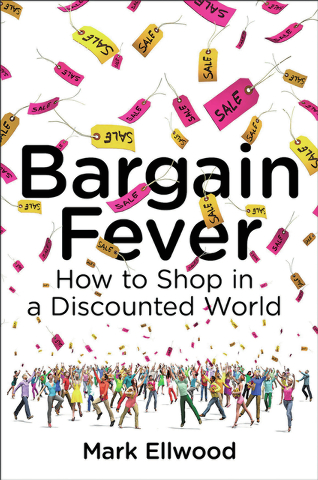Bargains: Help for the savvy shopper
You thought you’d never reach the door.
There you were, day after Thanksgiving, three o’dark a.m., and the Black Friday line stretched a mile in front of you.
What, exactly, possessed you to get out of your warm bed to stand in line? Was it the sale, the thrill of the hunt, or something else? Read the new book “Bargain Fever,” by Mark Ellwood, and you could say it’s all in your head…
The last time you went to the store, it may’ve seemed like there were a dozen new products on the shelves. That’s entirely possible. Actually, since World War II, in supermarkets alone, the number of individual items has increased “more than tenfold.”
Your brain loves that — to a point. When you shop (particularly when bargains are involved), dopamine floods your gray matter, giving you a rush of excitement. But that can backfire, if discounts are too frequent, dopamine highs are lessened.
Retailers and manufacturers know that, and they have ways to override your blasé brain. Shoppers are increasingly becoming savvy, though. We’re getting better at “spotting the trick first.” We’re learning to fight back.
Take coupons, for instance.
In 2010, consumers saved almost $2 billion by using coupons. More than 60 percent of U.S. households use them today, including upper-income shoppers. Entire industries (and reality TV) are based on little pieces of paper — and so, alas, is an increasing amount of crime and fraud.
But money-saving doesn’t stop with snip of scissor. You can join one of those savings websites, and hope a big enough group wants to join you in a deal. If you know how to do it right, you can save scads of money on flights, hotels, clothing and shoes (even high-end designer kicks). Savvy realtors know how to wring more cash from a buyer, and buyers are learning to negotiate. And on that note, we’re frequently discovering that a haggle is no hassle.
In the meantime, merchants have learned to utilize our “purchase history” for better marketing. They’ve learned that we hate no-markdown stores. And they know there’s no going back. Bargain hunting is definitely here to stay.
Can’t pass up a good sale? Are the words “marked down” like a balm on your soul? Then open your wallet. You won’t be able to resist “Bargain Fever,” either.
With the gossipy tone of a sure insider and the info to match, author Mark Ellwood pokes around retail shelves and e-stores to teach us why we shop, how we buy, and why the rules are constantly changing for both seller and shopper. The facts Elwood shares are fascinating and the secrets he spills are fun to know.
And that’s what makes this book so darn good — it’s got something for everybody, no matter which side of the cash register you’re on, and no matter how much money you budget for shopping … if you budget at all. Either way, if you plan to spend money anywhere this holiday season, “Bargain Fever” is a book to reach for first.
“Bargain Fever: How to Shop in a Discounted World” by Mark Ellwood, c.2013, Penguin Portfolio $26.95 / $28.50 Canada, 278 pages.
















